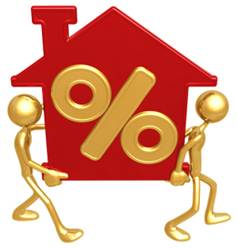The importance and role of branding
According to Aswath Damodaran, professor of finance at New York University's Stern School of Business, a brand's value is simply about the extent to which it can sell its goods and services at a premium price.
Damodaran believes that marketers often mistake attribute product quality, styling, service and reliability to a brand name's value, when all brand value ultimately comes down to is pricing power.

If you as a company tell me that you have a brand name, I'm going to ask you a question: 'Do you have the power to charge a higher price for the same product? If your answer is no, I don't think you have a brand. You may think you do, but I don't think your brand has any value.
Despite this very narrow interpretation, marketing literature describes the many other benefits associated with strong brands:
- Customers can identify products quickly in a retail environment, especially if the brand has a strong visual identity or logo.
- Brands provide multiple sensory stimuli to enhance customer recognition. A brand can be visually recognised from its packaging, logo, colour and shape. It can also be recognised through sound, such as hearing the name on a radio or TV advertisement or through conversations with other customers who talk about the brand.
- Increased revenues and market share are based on brand loyalty and positive brand associations. Loyal customers are less likely to switch to competitor brands.
- Decreased price sensitivity (low price elasticity of demand) - customers are prepared to pay a premium price for a perceived additional benefit of the brand over its competitors, which should lead to increased profitability.
- Suppliers and manufacturers will have a stronger negotiation position with retailers who know the brand will add to their image and generate reliable sales. As a result a high price may be charged and maintained.
- Increased shareholder and asset value as a result of the intangible value of the brand; the value of this brand equity can be realised by selling or licensing the brand.
- A shared vision among stakeholders focusing on the brand's values, and an increased capacity to motivate the workforce.
- Increased ability to extend the brand into new product and service categories. There are lower risks associated with introducing new products under the same "family" brand, as they are already recognised by customers.
- Increased ability to attract and retain high quality employees who like to be associated with a successful brand (and therefore organisation).
- A brand tends to have a much greater longevity than a product - a brand can be transferred to a related and updated product or version.
- A brand should offer a shorthand summary of all the information customers hold about the product. When customers associate benefits, especially emotional benefits, with a particular brand, it gains significant competitive advantage. Customers trust brands because they know what to expect.

Why not try the 'Guess the logo' game to see how well you know your brand logos?
 The rule of thumb among communications specialists is that about 80% of all human communication is non-verbal, and indeed, much of the meaning of verbal language itself is determined by nonverbal cues. Research shows that approximately 93% of the meaning contained in any message is non-verbal (Mehrabian 1971).
The rule of thumb among communications specialists is that about 80% of all human communication is non-verbal, and indeed, much of the meaning of verbal language itself is determined by nonverbal cues. Research shows that approximately 93% of the meaning contained in any message is non-verbal (Mehrabian 1971).
Furthermore, visual representations are processed differently than verbal messages and are not subject to the same logical scrutiny and counter arguments and as a consequence, brand images such as logos and symbols are more likely to be internalised, with the increased potential of affecting attitudes and behaviour. This is why firms are prepared to spend so much money of rebranding exercises and updating and modernising logos.
Some significant brand redesigns took place in 2009 including AOL, MSN, Hertz and Audi.

You can view the changes in logo in the window below or by following this link.